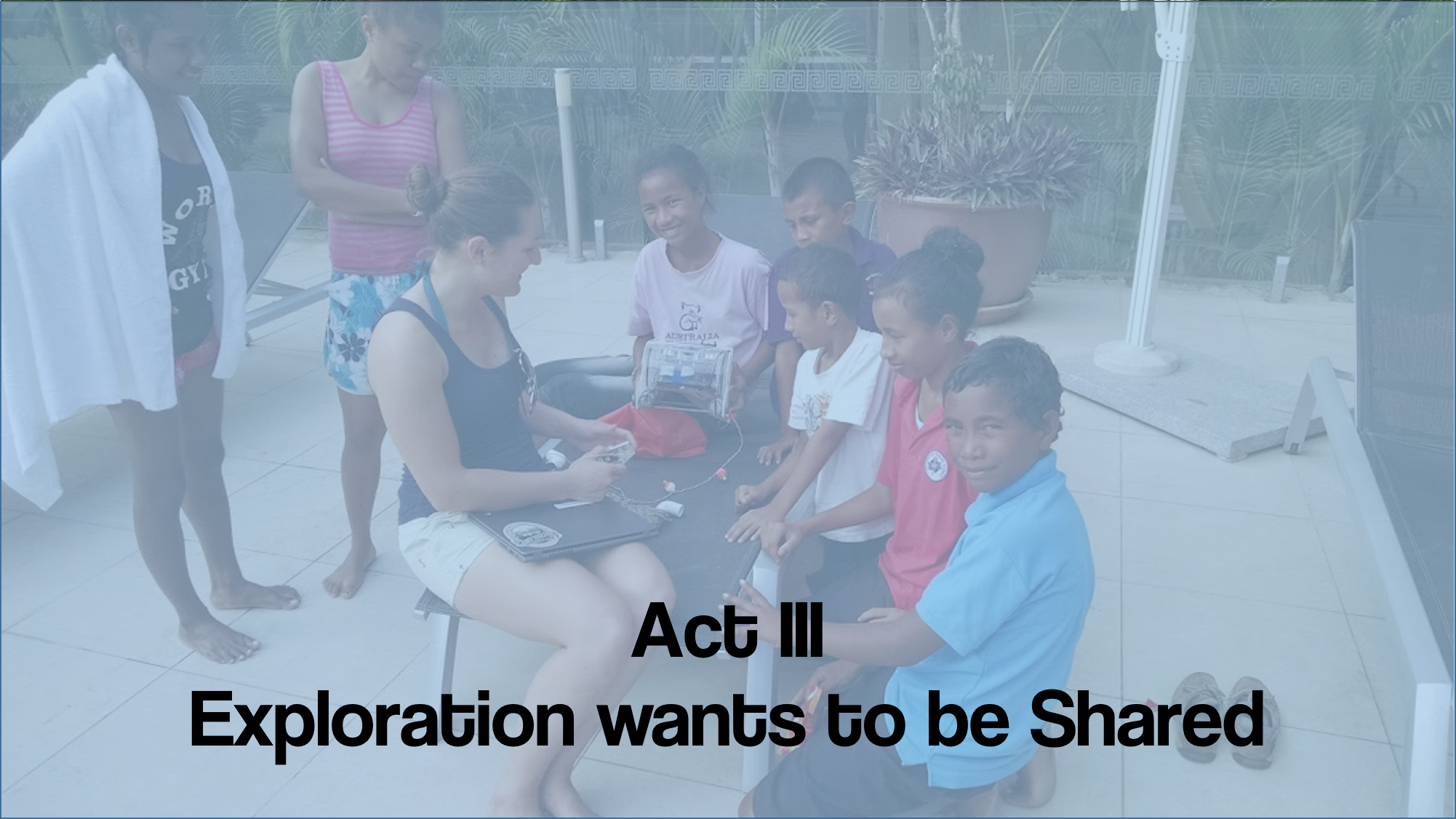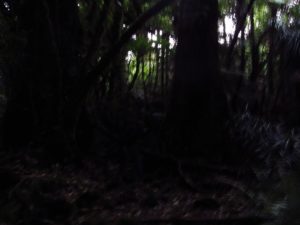Year-in-review news roundups are one of my favorite parts of December. I really enjoy remembering all of the interesting and inspiring things that happened over the past year, especially after a rough year like this one. I especially enjoy “top science news of the year” roundups, and I was pleased to see marine science stories make the cut on many of them. For your “but why is this considered a top story but that isn’t” debating pleasure, here are the marine science news stories that made top science news stories of the year listicles!
Category: Blogging
Earlier this week, I announced that I have officially earned my Ph.D.! I am hoping to use this occassion to raise funds for a variety of environmental causes. If you’re able to help, I’ve created a JustGive.org campaign that allows you to donate to my favorite environmental and human rights causes in honor of my … Read More “Help save the oceans in honor of David’s Ph.D.!” »
We stand at a crossroads.
Southern Fried Science has occupied a unique niche in the online ocean community. We have defended commercial and recreational fishers as often as we have opposed them. We have at times stood behind ocean conservation policy and at times pushed back against excessive legislation. We have criticised those within our community and those without. We have been radically libertarian and radically socialist and every label in between.
We are comfortable joining the long call, the great song that booms from the belly of a blue whale, and circles the world as it echoes through the community.
We are comfortable being the lone cry of dissent, pushing back against the onslaught of righteous exuberance.
We have never sought consensus, only common ground.
For almost a year now a phrase has been rattling around inside my head. At first it was just catchy cadence, something to use on the next article. But the more I thought about it, the more I came to understand what it really means; how deeply it permeates almost every aspect of life on this planet.
Diversity is resilience.
Over the weekend, I decided to try my hand at some deep-learning using recurrent neural networks to create a text-writing bot trained on old Southern Fried Science posts. After 48 hours of training, the Southern Fried AI was born. This is what it has to say about the future of ocean conservation.
In the future, ocean conservation priorities will be dictated by the conservation conservation project. In the post of energy sharks and most of the greatest over the study has been conservation and dedicated to watch of conservation, the all new way that was she than a community to show better some astronation there is a research work (and sharks) in a more server shows of the research design of a discovery of campaign that even the results of some of the operational shark sources in the Climate change for the ensing and make that it may also end in the science of the response to the population of positions of marine scientists with my most months of cheap more and the project of a shark (with sampling and interesting proposal great from the final fishermen in the science and species of mermaids and other projects with some of the career of the Sea How and has a project that will be a dogfish down their beran place to go as a restoration and the ocean that submerse to have interesting a public posting ocean deciding enough to be asking “we could can be among the transports that is a shark critical components.”
This is the transcript of the keynote I delivered at the Fourth International Marine Conservation Congress in St. John’s, Newfoundland. It has been lightly modified for flow.
Read Act II: Transforming the Narrative.

Now I want to shift gears and look towards the future, where we’re going, and what tools are available to help us get there. Because the future of ocean outreach, and really the future of ocean conservation, comes down to this one concept: “Exploration wants to be shared”.

The online ocean ecosystem is full of platforms–preexisting tools that allow us to produce, share, broadcast, enhance, and manage our outreach campaigns. Not just the obvious ones like Twitter and Facebook, but more niche tools like Slack, github, Ushahidi, medium, and yes, even PokemonGo, or if you want something a bit more serious, consider R as something that’s not just a statistics package, but a way to share your own software and data with the scientific community.
Read More “Ocean Outreach in an Evolving Online Ecosystem: Exploration wants to be shared” »
This is the transcript of the keynote I delivered at the Fourth International Marine Conservation Congress in St. John’s, Newfoundland. It has been lightly modified for flow.
Read Act I: Science is Storytelling.

In Act I I discussed the underlying structure that frames narrative storytelling, but now I want to talk about how we can use the tools available to us on the internet to transform that narrative into something even more potent.
But before we can do that I have to tilt at some windmills.

When we talk about good outreach, we often look to people like Neil deGrasse Tyson, like Bill Nye, like David Attenborough, and like Carl Sagan. These are the paragons of scientific outreach, the icons that we often hold up as examples for what constitutes good outreach. We talk about things like Cosmos, both Sagan’s and deGrasse Tyson’s, Bill Nye the Science Guy and his more recent work combating climate change, or David Attenborough and his astounding Nature Documentaries.
Read More “Ocean Outreach in an Evolving Online Ecosystem: Transforming the Narrative” »
This is the transcript of the keynote I delivered at the Fourth International Marine Conservation Congress in St. John’s, Newfoundland. It has been lightly modified for flow.

Good morning and thank you all for coming, especially this early after a long week of conferencing. What I want to do today is talk a little bit about the history of online outreach, talk about how to build effective outreach campaigns, and look towards the future to think about how new technologies are shaping and reshaping the ways in which we think about public engagement with science and conservation.
 So science is storytelling. Sometimes that story an adventure. Sometimes it’s a mystery. Sometimes it’s the dense and weighty exposition of Ulysses and sometimes it’s the absurdity of Finnegan’s Wake, but it is always a story.
So science is storytelling. Sometimes that story an adventure. Sometimes it’s a mystery. Sometimes it’s the dense and weighty exposition of Ulysses and sometimes it’s the absurdity of Finnegan’s Wake, but it is always a story.
Read More “Ocean Outreach in an Evolving Online Ecosystem: Science is Storytelling” »
Some SCUBA diving operators use bait or chum to attract sharks so that their customers can get an up close and personal encounter. A new bill that would make this practice illegal in all U.S. waters has just been introduced into Congress. Section 3 of S. 3099, the “Access for Sportfishing Act of 2016,” contains the following provision:

Today marks the last day of Craig McClain week for our friends over at Deep Sea News. We’ve celebrated his science, his outreach, and his tremendous spirit. Over the last decade, I’ve been lucky enough to co-author two papers with Craig: Digital environmentalism: tools and strategies for the evolving online ecosystem and Sizing ocean giants: patterns of intraspecific size variation in marine megafauna, both of which have quickly become seminal in their related fields. Craig is a titan, and my one regret is that I didn’t try hard enough to convince him to determine the author order for Sizing Ocean Giants by our respective sizes.
One time, in New Zealand, he tried to impersonate a Sasquatch.
There’s been some amazing things happening around the oceanosphere, none of which are particularly related. All of which are pretty awesome (or super bogus). Here we go! 1. Robots to save the ocean. Last weekend I was in Miami at We Robot 2016, a meeting about the future of robotics and the law, repping for … Read More “Robots! Artificial Gills! Goats! Craig! A series of unrelated ocean updates” »